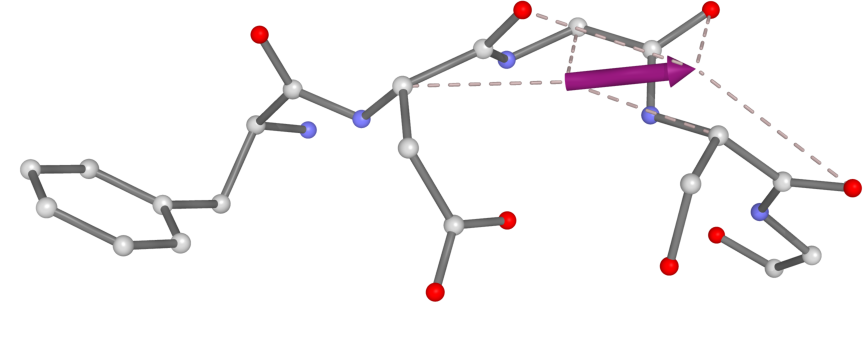ALEPH
A network based bioinformatics tool for generating libraries for fragment based molecular replacement and for structure interpretation
ALEPH is a program to retrieve structural properties of proteins. The geometrical description in ALEPH is based on vectors computed from the centroid of all Cα to the centroid of all carbonyl O in a polypeptide stretch. Properties of the Characteristics Vectors (CVs) and their distribution, such as the length of their moduli, and the distances and angles among them are cast in a network to represent the structure of proteins.
Check out ALEPH's YouTube channel.

ALEPH also provides ancillary methods for application in Molecular Replacement. The software is integrated in the ARCIMBOLDO framework, a fragment-based molecular replacement phasing approach that is using PHASER for fragment location and SHELXE for density modification and autotracing.
ALEPH offers the four tasks displayed in the figure through its graphical interface (ALEPHUI):
Annotation: flexible and user customized description of the secondary and tertiary structure.
Decomposition: division of the protein in smaller compact groups or local folds. The decomposition is a step part of ARCIMBOLDO_SHREDDER to cluster secondary structure elements into subfolds to confer them additional degree of freedom during the MR search.
Library generation: extraction of a given fold from a subset of models to create a superposed and clustered library for its use within ARCIMBOLDO_BORGES.
Superposition: identification and alignment of given fragments in a complete structure.
ALEPH can be downloaded through pip http://chango.ibmb.csic.es/download.
ALEPH: a network oriented approach for the generation of fragment based libraries and for structure interpretation.
Ana Medina, Josep Triviño, Rafael J. Borges, Claudia Millán, Isabel Usón and Massimo D. Sammito.